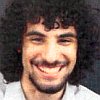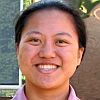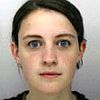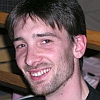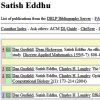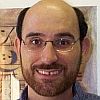| |

Daniel H. Huson. Split networks and Reticulate Networks. In
Olivier Gascuel and
Mike Steel editors, Reconstructing Evolution, New Mathematical and Computational Advances, Pages 247-276, Oxford University Press, 2007.
Keywords: abstract network, consensus, from rooted trees, from sequences, from splits, from unrooted trees, galled tree, hybridization, phylogenetic network, phylogeny, Program Beagle, Program Spectronet, Program SplitsTree, Program SPNet, recombination, reconstruction, split network, survey.
Note: similar to http://www-ab.informatik.uni-tuebingen.de/research/phylonets/GCB2006.pdf.
|
|
| |
   
Cam Thach Nguyen,
Nguyen Bao Nguyen,
Wing-Kin Sung and
Louxin Zhang. Reconstructing Recombination Network from Sequence Data: The Small Parsimony Problem. In TCBB, Vol. 4(3):394-402, 2007.
Keywords: explicit network, from sequences, labeling, NP complete, parsimony, phylogenetic network, phylogeny.
Note: http://www.cs.washington.edu/homes/ncthach/Papers/TCBB2007.pdf.
|
|
| |
   
Dan Gusfield,
Vikas Bansal,
Vineet Bafna and
Yun S. Song. A Decomposition Theory for Phylogenetic Networks and Incompatible Characters. In JCB, Vol. 14(10):1247-1272, 2007.
Keywords: explicit network, from sequences, galled tree, phylogenetic network, phylogeny, Program Beagle, Program GalledTree, recombination, reconstruction, software.
Note: http://www.eecs.berkeley.edu/~yss/Pub/decomposition.pdf.
|
|
| |
    
Yun S. Song,
Zhihong Ding,
Dan Gusfield,
Charles Langley and
Yufeng Wu. Algorithms to Distinguish the Role of Gene-Conversion from Single-Crossover Recombination in the Derivation of SNP Sequences in Populations. In JCB, Vol. 14(10):1273-1286, 2007.
Keywords: ARG, from sequences, phylogenetic network, phylogeny, Program SHRUB, reconstruction.
Note: http://dx.doi.org/10.1089/cmb.2007.0096.
Toggle abstract
"Meiotic recombination is a fundamental biological event and one of the principal evolutionary forces responsible for shaping genetic variation within species. In addition to its fundamental role, recombination is central to several critical applied problems. The most important example is "association mapping" in populations, which is widely hoped to help find genes that influence genetic diseases (Carlson et al., 2004; Clark, 2003). Hence, a great deal of recent attention has focused on problems of inferring the historical derivation of sequences in populations when both mutations and recombinations have occurred. In the algorithms literature, most of that recent work has been directed to single-crossover recombination. However, gene-conversion is an important, and more common, form of (two-crossover) recombination which has been much less investigated in the algorithms literature. In this paper, we explicitly incorporate gene-conversion into discrete methods to study historical recombination. We are concerned with algorithms for identifying and locating the extent of historical crossing-over and gene-conversion (along with single-nucleotide mutation), and problems of constructing full putative histories of those events. The novel technical issues concern the incorporation of gene-conversion into recently developed discrete methods (Myers and Griffiths, 2003; Song et al., 2005) that compute lower and upper-bound information on the amount of needed recombination without gene-conversion. We first examine the most natural extension of the lower bound methods from Myers and Griffiths (2003), showing that the extension can be computed efficiently, but that this extension can only yield weak lower bounds. We then develop additional ideas that lead to higher lower bounds, and show how to solve, via integer-linear programming, a more biologically realistic version of the lower bound problem. We also show how to compute effective upper bounds on the number of needed single-crossovers and gene-conversions, along with explicit networks showing a putative history of mutations, single-crossovers and gene-conversions. Both lower and upper bound methods can handle data with missing entries, and the upper bound method can be used to infer missing entries with high accuracy. We validate the significance of these methods by showing that they can be effectively used to distinguish simulation-derived sequences generated without gene-conversion from sequences that were generated with gene-conversion. We apply the methods to recently studied sequences of Arabidopsis thaliana, identifying many more regions in the sequences than were previously identified (Plagnol et al., 2006), where gene-conversion may have played a significant role. Demonstration software is available at www.csif.cs.ucdavis.edu/∼gusfield. © 2007 Mary Ann Liebert, Inc."
|
|
| |
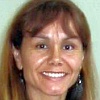 
Patricia Buendia and
Giri Narasimhan. Sliding MinPD: Building evolutionary networks of serial samples via an automated recombination detection approach. In BIO, Vol. 23(22):2993-3000, 2007.
Keywords: from sequences, phylogenetic network, phylogeny, Program Sliding MinPD, recombination, recombination detection, serial evolutionary networks, software.
Note: http://dx.doi.org/10.1093/bioinformatics/btm413.
Toggle abstract
"Motivation: Traditional phylogenetic methods assume tree-like evolutionary models and are likely to perform poorly when provided with sequence data from fast-evolving, recombining viruses. Furthermore, these methods assume that all the sequence data are from contemporaneous taxa, which is not valid for serially-sampled data. A more general approach is proposed here, referred to as the Sliding MinPD method, that reconstructs evolutionary networks for serially-sampled sequences in the presence of recombination. Results: Sliding MinPD combines distance-based phylogenetic methods with automated recombination detection based on the best-known sliding window approaches to reconstruct serial evolutionary networks. Its performance was evaluated through comprehensive simulation studies and was also applied to a set of serially-sampled HIV sequences from a single patient. The resulting network organizations reveal unique patterns of viral evolution and may help explain the emergence of disease-associated mutants and drug-resistant strains with implications for patient prognosis and treatment strategies. © The Author 2007. Published by Oxford University Press. All rights reserved."
|
|
| |
   
Galina Glazko,
Vladimir Makarenkov,
Jing Liu and
Arcady Mushegian. Evolutionary history of bacteriophages with double-stranded DNA genomes. In Biology Direct, Vol. 2(36), 2007.
Keywords: explicit network, from sequences, phylogenetic network, phylogeny, Program T REX.
Note: http://dx.doi.org/10.1186/1745-6150-2-36.
Toggle abstract
"Background: Reconstruction of evolutionary history of bacteriophages is a difficult problem because of fast sequence drift and lack of omnipresent genes in phage genomes. Moreover, losses and recombinational exchanges of genes are so pervasive in phages that the plausibility of phylogenetic inference in phage kingdom has been questioned. Results: We compiled the profiles of presence and absence of 803 orthologous genes in 158 completely sequenced phages with double-stranded DNA genomes and used these gene content vectors to infer the evolutionary history of phages. There were 18 well-supported clades, mostly corresponding to accepted genera, but in some cases appearing to define new taxonomic groups. Conflicts between this phylogeny and trees constructed from sequence alignments of phage proteins were exploited to infer 294 specific acts of intergenome gene transfer. Conclusion: A notoriously reticulate evolutionary history of fast-evolving phages can be reconstructed in considerable detail by quantitative comparative genomics. © 2007 Glazko et al; licensee BioMed Central Ltd."
|
|
| |

Hans-Jürgen Bandelt and
Arne Dür. Translating DNA data tables into quasi-median networks for parsimony analysis and error detection. In MPE, Vol. 42(1):256-271, 2007.
Keywords: abstract network, from sequences, parsimony, phylogenetic network, phylogeny, quasi-median network, reconstruction.
Note: http://dx.doi.org/10.1016/j.ympev.2006.07.013.
Toggle abstract
"Every DNA data table can be turned into a quasi-median network that faithfully represents the data. We show that for (weighted) condensed data tables the associated network harbors all most parsimonious reconstructions for any tree that connects the sampled haplotypes. Structural features of this network can be computed directly from the data table. The key principle repeatedly used is that the quasi-median network is uniquely determined by the sub-tables for pairs of characters. The translation of a table into a network enhances the understanding of the properties of the data in regard to homoplasy and potential artifacts. The total number of nodes of such a network measures the complexity of the data. In particular, networks that display the results of filter analyses by which hotspot mutations are removed help to detect data idiosyncrasies and thus pinpoint sequencing problems. A pertinent example drawn from human mtDNA illustrates these points. © 2006 Elsevier Inc. All rights reserved."
|
|
| |
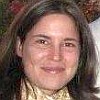  
Hadas Birin,
Zohar Gal-Or,
Isaac Elias and
Tamir Tuller. Inferring Models of Rearrangements, Recombinations, and Horizontal Transfers by the Minimum Evolution Criterion. In WABI07, Vol. 4645:111-123 of LNCS, springer, 2007.
Keywords: explicit network, from sequences, phylogenetic network, phylogeny, reconstruction.
Note: http://safrabio.cs.tau.ac.il/download/Papers/Birin_et_al.pdf.
|
|
|
 - forked on GitHub.
- forked on GitHub.




























